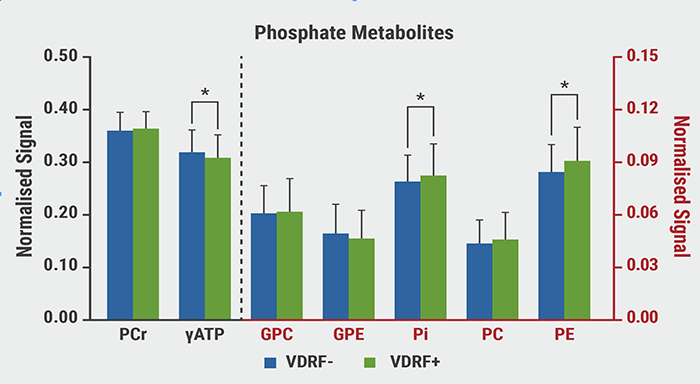What is the unmet need in patients with MS that your lab is trying to address?

“Currently there is no sufficient way to treat MS,” said Prof. Mitragotri. “The only effective agents that are applicable in practice are systemic immunosuppressants, and these drugs are not as effective as we would like them to be. Moreover, these agents come with many side effects, mainly because the brain is so difficult to infiltrate with medication. Our team envisioned an approach of using innate immune cells to treat MS. We started using macrophages and monocytes, key components of this innate system, and we developed a novel treatment strategy, which is showing promise.”
Could you elaborate on that strategy?
“When it comes to MS, the focus has always been on the adaptive side of the immune system, because that side has been known to be responsible for attacking the tissue and causing tissue degradation. What is not fully appreciated is that the innate immune system is driving a lot of the inflammation in the brain, eventually triggering the adaptive immune system. We wondered whether it would be effective to target the problem from a different angle. Our aim was to develop a therapy that uses the innate immune cells, the monocytes and macrophages, to get into the brain and reduce inflammation.”
“A major challenge, however, is that the innate immune system is highly flexible. For example, if the monocytes infiltrate the brain via the blood circulation, they will register inflammation in the brain tissue and become part of the problem,” explained Prof. Mitragotri. “Therefore, we need to find a way to control the behaviour of the innate immune cells as they enter the brain. This led us to develop a technology that we call backpacks.”
“These backpacks are in fact polymeric, disc-shaped particles that are very thin and have a diameter that is comparable to the cell diameter, which is a few microns. You can imagine these backpacks as micro-patches, adhering to the monocytes and being carried by these monocytes. In these backpacks, we have incorporated 2 agents: dexamethasone and IL-4. This is a very potent combination that can control the phenotype of a macrophage. When we put these backpacks, containing these 2 drugs, on monocytes and inject them intravenously, they enter the brain together with the monocyte and control the phenotype of the cell in situ. Since the drugs are localised so close to the cell, we can deliver a high local concentration to control the phenotype of the cell, without getting the drug released off-target.”
“It's a highly engineered way of controlling the behaviour of the cell, with the purpose of reducing inflammation in the brain and subsequently improving disease outcomes.”
That's a very unique and novel approach to stimulate a specific signalling pathway in a very local area. How do you measure the effects?
“When we designed the backpack, we first measured the effects on the cell itself. That was done ex vivo. We attached the backpack to the monocyte and looked at the pro-inflammatory and anti-inflammatory markers of the resulting macrophage. Next to that, we made sure that the backpack is delivering sufficient doses of the drugs to control the phenotype of the macrophage."
“In terms of the disease outcome, we use the experimental autoimmune encephalomyelitis (EAE) model; we inject the cells that carry the backpacks intravenously and observe the behaviour of the rodent to confirm the outcome of the disease. We also look at the tissue, which gives us a good indication of what is happening at the cell and tissue level within the brain. It can be observed that the cells carrying backpacks which have infiltrated into the tissue can maintain the right phenotype in the disease microenvironment.”
That sounds very promising. What are some of the next steps to take?
“We continue to optimise the system in order to improve the performance of the backpacks. Another step to take is seeking collaboration with clinicians to introduce this approach in the clinic. There are still many translational steps to be taken from the ‘discovery part’ where we are now. We need to scale up, and do a safety and long-term evaluation. Those are the steps we are currently looking at to move this technology forward.”
Are there any other points that you would like to make to clinicians, about how they can support or understand research in this respect?
“MS is a complex disease and strategies that attack the problem from multiple angles are really beneficial. My research team and I feel that the role of the innate immune system in MS has not been well appreciated, even though it offers a very interesting opportunity, not only to understand the disease, but also to treat it. We are very excited to further explore this angle of attacking the disease. And, as said, it would be great to work in collaboration to move these ideas forward,” concluded Prof. Mitragotri.
Copyright ©2023 Medicom Medical Publishers
Posted on
Previous Article
« Comorbidity in adult psoriasis Next Article
How big data can boost care for neurodegenerative disorders »
« Comorbidity in adult psoriasis Next Article
How big data can boost care for neurodegenerative disorders »
Related Articles
November 25, 2020
Safety and efficacy of dimethyl fumarate: 13 years of follow-up

June 16, 2021
Dysmetabolism may drive MS progression
November 25, 2020
Therapeutic potential of anti-MOSPD2 monoclonal antibodies
© 2024 Medicom Medical Publishers. All rights reserved. Terms and Conditions | Privacy Policy
HEAD OFFICE
Laarderhoogtweg 25
1101 EB Amsterdam
The Netherlands
T: +31 85 4012 560
E: publishers@medicom-publishers.com

